Horse riding abroad

There are always topics that you would prefer not to think about because they are too exhausting and uncomfortable and they make you feel guilty – and that is exactly why they are so important. Below you will find a very touching and thought-provoking report on the subject of “riding abroad” by Teresa Moninger. A few years ago, Teresa was an intern at Babettes former stables for about one year. She has now moved to the USA, where she now works as a yoga instructor and landscaper. She didn’t lose her love for horses and rescued 2022 two mini ponies that now live with her. Out of this love she has written this article, in which she addresses a subject that is little read about because it is sensitive and unpopular. Quite a “fun killer topic”, so – all the more important to address it.
Basically, grievances in the horse world are often only hesitantly addressed, you don’t want to step on anyone’s toes because you’ve done a lot yourself that you know was not okay. And when it’s about vacation and foreign countries, where life is a bit different from ours for various reasons, it becomes even more difficult. Teresa has dealt with this important topic in a way that is as personal as it is differentiated, so that from our point of view her text provides the basis for the indispensable portion of self-reflection that we all have to muster if we want to be real horse lovers, and that without anything only draw in black and white.
Many of you will probably not be able to take the vacations planned for this year and so there is a good opportunity at this time to think for yourself how to deal with the question of whether you can also go abroad in the future does not want to give up the pleasure of riding and under what conditions this is justifiable …
Horse riding abroad
From Teresa Moninger
Endless white beach, waving manes, the sound of the turquoise Caribbean Sea next to you and you galloping – a kitschy, albeit dreamlike horse girl scene. I experienced it myself: as a fellow rider, as a guide and in the eyes of the sweaty tourists whose horses I received after their three-hours long beach and jungle rides. I unsaddled the horses for them, cleaned them, fed them and let them out to pasture.
My time in Costa Rica
Where I live there are wild horses and therefore it is not possible to keep a horse yourself. For several winters now I leave the island where I live in the US and travel to a foreign country to work with horses. This time I was in a small village just off the Caribbean coast of Costa Rica for five weeks. A place with sloths, jungle sounds, palm trees and a lot of mostly German-speaking tourists.
So far I have only experienced Central America as a backpacker. At that time, I saw small, skinny horses on the side of the road, helping local people to herd cattle. After some research, it turned out that Costa Rica is full of horse ranches where travelers can fulfill their dream of riding horses on the beach. A few emails later I had a job as an intern to help with horse training and care for over ten horses.
Like probably most people interested in horses, it wasn’t a surprise to me that a horse in Central America leads a different life than in a Western country and is still mainly used for carrying loads, driving and transporting goods and building material. The increasing tourism, especially in Costa Rica, has prompted foreign investors to offer beach rides with horses. As a rule, these are run by local staff who are more familiar with the language and the localities. The horses are mostly ridden with the typical Hakima (equivalent to a bosal) and Western-style leisure saddles and are very often shod due to the stony ground.
A horse in Costa Rica can be purchased for around 350 euros and, depending on the purpose, usually lives in a pasture fenced with barbed wire or is tied up in a field. When I arrived I noticed that all the horses were friendly but relatively uninterested in people, which is understandable with daily changing riders. With the exception of the horses that had not yet been broken in, all of them had scars, hairless patches and sometimes knotty wounds on their backs and noses. The withers, which should normally be softly embedded in the muscles, were particularly affected. It stood out with clear injuries and should therefore be padded by me with pieces of foam or small pillows cut to size. None of the saddles fit the horses, all were extremely narrow at the withers, hardly allowed any air circulation in the spine and thus prevented the growth of the carrying muscles. After all, the saddle area was thoroughly cleaned by all guides, which is worth a lot, but cannot make up for a dirty girth and an unfitting saddle.
The horses were fed daily pellets and hay in addition to grazing, yet many had prominent hip bones and visible spinous processes. The neck and back muscles were almost completely atrophied and as a result I recognized two running patterns of the horses: the ones that tripped, ran and walked very irregularly, with their heads lifted and their eyes stressed and the others whose joy of running under the rider no longer existed. They shuffled, barely moving forward even as the rest of the group ran away. They showed hanging ears, clenched jaws, and eyes hollowed out in concern.
I decided after my first ride that I wanted to participate as little as possible in riding and limited my horse work primarily to their wellness. I massaged tense horses’ bodies, whereupon the animals experienced and allowed this kind of touch, first skeptically threatening then chewing with their eyes closed. Each of the horses reacted extremely sensitive to pressure when touched in the saddle area and on the poll, and half of the horses showed clear saddle compulsion. Nevertheless, they endured being saddled once or twice a day with the patience and kindness typical of horses and almost incomprehensible to me. If I were subjected to such torture every day and given me shoes that were too small or an unsuitable backpack, I would vehemently defend myself the next day at the latest. I tried to make the best of the situation, taking some horses for a walk and doing a little bit of positioning and bending from the ground. Since the horses were really only ridden in a straight line, this was something completely new for them. However, any additional work with the four-legged friends often felt wrong because I just wanted to give them some rest. But I have to say I am guilty of bareback riding the horses from one pasture to the other along for a short 6min ride sometimes. Nothing I am proud of in hindsight.
Run by a European, the farm offers twice-daily horseback rides to the mountains, jungle, and beach. The skills and age of the riders are not taken into account. However, according to the owner, there is a weight limit that must not be exceeded.
According to the owner and the guide, both experienced riders and beginners love a fast gallop on the beach. Since the horses hardly have any sweeping gaits, they let everyone sit them to some extent. I’ve seen novices wobble roughly in the saddle, but everyone stays up – being carried instead of riding.
Yes, it is a dream to gallop on the endless beach with a group of up to ten horses. And when someone mounts his already saddled horse, all that counts is this dream that comes true on vacation. Where we see the world differently anyway. And when you get off, sweaty and happy, your head and phone full of fairytale pictures, you might forget to thank your horse. While the volunteers unsaddle, you’re already chasing after the next highlight of the trip. You may only have these two weeks to escape your everyday life and have paid an expensive flight to experience a break from your worries and thoughts. I understand that well and do not begrudge it. Traveling broadens the horizon, we not only discover a foreign country, but also completely unknown paths within ourselves. The sense of time changes and our nervous system gets new stimuli from exotic food, different cultures, foreign animals and different climates.
Affordable dreams and the naked reality
I understand that many cannot afford to ride at home. How tempting is such a relatively inexpensive ride in paradise? And I also understand that a total horse novice can’t see if a horse is healthy or if it’s being exploited. But what I don’t understand is why we riders or horse owners abroad don’t pack our values regarding species-appropriate riding (if there is such a thing) in our suitcases. If you look behind the facade of the nice travel dream, then you will see them, the worry lines around the eyes and nose, the disinterest in people, the scars at their noses, the stumbling and lack of rhythm in their pace. And also the saddle sores, which we wouldn’t overlook if we insisted on being present when our horses get saddled or unsaddled. However, none of the weekly groups of riders who had booked a trip through one of the well-known worldwide operating organizations and who came almost exclusively from Europe and North America were present when the horses got saddled.
Nobody asked about the peculiarities of the horses, how they were ridden or the conditions under which they were kept. But everyone came on time to mount.. There was no introduction from the guides on how to ride or how to give aids. A ride started with mounting, kicking in the stomach and pulling on the reins to steer and stop. I was at least able to convince the farm manager that all the riders got on the horses from a chair, although the guides refused to do so and jumped up with a courageous leap, roughly landing on the horse’s back, which was already running and trying to find its balance. I tried to give the English and German speaking riders little clues.“Give her more reins, otherwise she will shake her head”, “Make sure he’s not at the front of the group or he’ll get upset.”, “Keep the nursing mare close to her free-running foal”, “When a truck passes you, speak to him calmly, breathe calmly and relax your hips”– these were my little attempts to convey something about the personality of horses to them.
Think, feel and decide again and again
So what remains to be done? Should we bury the beach ride dream forever and put all the horses out of work? Then, what happens? And aren’t horses running in a group on the beach happier than many school horses circling in a dusty arena? Animal suffering through ignorance, greed, abuse, exploitation or poverty is everywhere, in industrialized as well as developing countries. And there are also loving, caring, knowing and sensitive people everywhere, whose horses lead a species-appropriate and beautiful life and maybe still earn some money.
It’s not about pointing fingers away from yourself. I don’t want that either. I earned my food and lodging working for a woman who makes her living from horses, among other things. When I was five, I begged my parents on a trip to Turkey to be allowed to go horseback riding on the beach. And they agreed.. I, too, have ridden school horses whose life, looking back, really wasn’t a nice one, behind bars and full of fear of the riding instructor. Do I feel bad about it? Absolutely. That’s exactly why I feel how important it is to use my voice and my knowledge now to speak for those who carry us silently. I am certain I still am not perfect in every second I spend with my ponies. Sometimes I am tired of the end of the day and don’t feel like stopping for every grazing opportunity on our walks. I could definitely be more patient when applying insect repellent. And I am glad I don’t rely on my horses to make my living. It’s kind of a german thing to focus on the negative. I often dislike that about myself. Nevertheless I believe that critical thinking can be used for educating and changing people and replace outdated training and husbandry methods with more animal friendly approaches.
Our demand determines the supply. So let’s ask the right questions and carefully observe what the horses can tell us even before booking a ride:
- What is the general condition of the horses, their hooves, their feeding condition, their fur?
- How often and how long do they carry riders per day/week?
- Do they get days off?
- How do they respond to their caretakers?
- Would I ride a horse at home that has sores and wounds on its back?
- What am I willing to pay?
- Does each horse have suitable, customized tack and can it be put on in a relaxed manner?
- Are the horses lovingly cared for before, during and after work?
- How is the general vibe at the grooming spot where the horses are typically tied up?
- What expectations do I have as a tourist and do I want them to be met under all circumstances?
- Do I dare dismount a lame horse?
- Am I questioning why my horse keeps banging his head or just doesn’t want to move forward?
- Can I meet the horses before riding, will I be given information about them and will the owner provide the necessary specialist knowledge?
It all sounds like work. Who wants to work on vacation? What was it about switching off your head and letting yourself drift while traveling? I am sure that with a little horse knowledge, a few well-aimed questions and thorough observation, you will get an answer from which you can and should draw your own conclusions.
A facilitating criterion when looking for the right ranch is the presence of a certificate. To find out more, I contacted the nonprofit organization McKee-Jaco in Costa Rica. In addition to other animal protection campaigns, this has been dealing with the clarification of horse abuse through tourism for years and has put up information signs on the subject of horse health on beaches. A member of the McKee-Jaco organization told me about SENASA, an organization that works, among other things, for animal welfare in Costa Rica and issues certificates. According to this, every business person must have a license (“patents”). A health certificate issued and signed by SENASA is part of this license. Unfortunately, there are still companies that have this license without ever having applied for and received a certificate from SENASA. Vitamin B is no secret in Central America.
When an English-speaking rider on a handsome horse lures tourists to his rides on the beach, it’s an effective ploy, but it’s often not backed by a trusted, licensed company. And where no official equestrian business is registered, according to the Costa Rican authorities, it is also not possible to insist on the closure of a questionable company. Reading negative comments at online review platforms such as google or tripadvisor can help but is not always the one and only way to form an opinion.
I arrived with the typical “I want to make the world a better place” plan, only to realize on the first day that I had to take it slow. A white woman is not necessarily considered an authority figure in Costa Rica and there are also language barriers on my side. With the limited means given to me, I have tried to improve something, at least for a short time, for these animals that mean so much to me. I tried to speak to the owner and was turned away. It’s just different here, I was told. She also explained to me that unlike dogs, horses don’t like people and are only interested in food.
I don’t think it is malicious or greedy, but very often ignorance. And that’s where we can make a difference. In small steps. It is clear to me that a touring horse cannot be ridden in line for six hours and trot along the beach with beginners doing gymnastic lateral movements. There is neither space in the jungle nor suitable ground conditions for a lunging ring. Also, no 3D scanner will measure an individual saddle for each horse. But maybe you can just start a conversation if you notice that the animals are suffering. Sometimes just surrounding yourself with horses, their energy, their smells can feed the need of horse connection you are looking for.You might find out it can be more nurturing than riding over all.
Many people on the coasts live from tourism. They build trendy cabinas and register them with AirBnB, and they read Tripadvisor reviews. They want tourists to recommend their place. So use your voice for the animals and demand that your riding horse be in a similar state of health as you would expect at home.
What I will take with me forever…
Contrary to my feelings, I didn’t leave straight away, but a few weeks earlier than planned. In addition to several moments, including beautiful ones, I would like to share the most poignant and at the same time the most difficult.
In the midst of this jungle, where crickets were chirping, the owner received a call that the part of the horses that stood in a more distant pasture had run loose. Streets were searched in the dark and the following morning and noon we walked through the jungle looking for hoof prints and droppings. The horses had been gone for more than fifteen hours at that point, the barbed wire entrance gate half torn down. The owner suspected that a donkey stallion that had escaped several times before had caused her horses to panic and startled them.
When we had no trace by mid-afternoon, it was decided that a guide and I should go horseback to look for the missing harem. I felt incredibly guilty as the guide and I were on the two horses with the worst backs and yet the beach and jungle ground we needed to cover in our search for the five missing horses would have taken days to cover by foot. We rode the exact distance that is normally ridden on the three hour tour and had little hope of finding any sign of life so far from home, especially as the hot temperatures outside meant the horses were likely to hide. We continued towards the river, the only place on the beach where the horses could have found water after eighteen hours of absence. Then we reached a small clearing where horseback riding tours always pause to open coconuts for tourists. And then we saw them. All together they stood right in this clearing and looked at us. My heart grew heavy. Free horses returned for a single sunrise and sunset to a familiar place of rest, far from people, that’s what will stick in my memory. We opened a coconut and while I started to drink, two of the horses raised their mouths and the three of us drank. An unforgettable moment.
We returned with all five horses, which after a quick check had few wounds. Back to their place of work where they would be neither free nor pain free. We returned the concerned owner’s horses and staff who would not starve or be bitten by snakes in the jungle.
What do we want to take with us?
I left and rested on other beaches for a few days. And saw many more horses there. Some more well-fed. Some obviously mentally shut down with tourists on their backs. One incessantly shaking his head.
These are not individual cases. It can be sobering and might leave us feeling helpless. Each of us can make a difference. Let’s stand up, speak up, say no and trust our intuition.
Common sense, love for animals and knowledge always fit into the luggage, whereas doing nothing and looking away can weigh heavily on the shoulders.
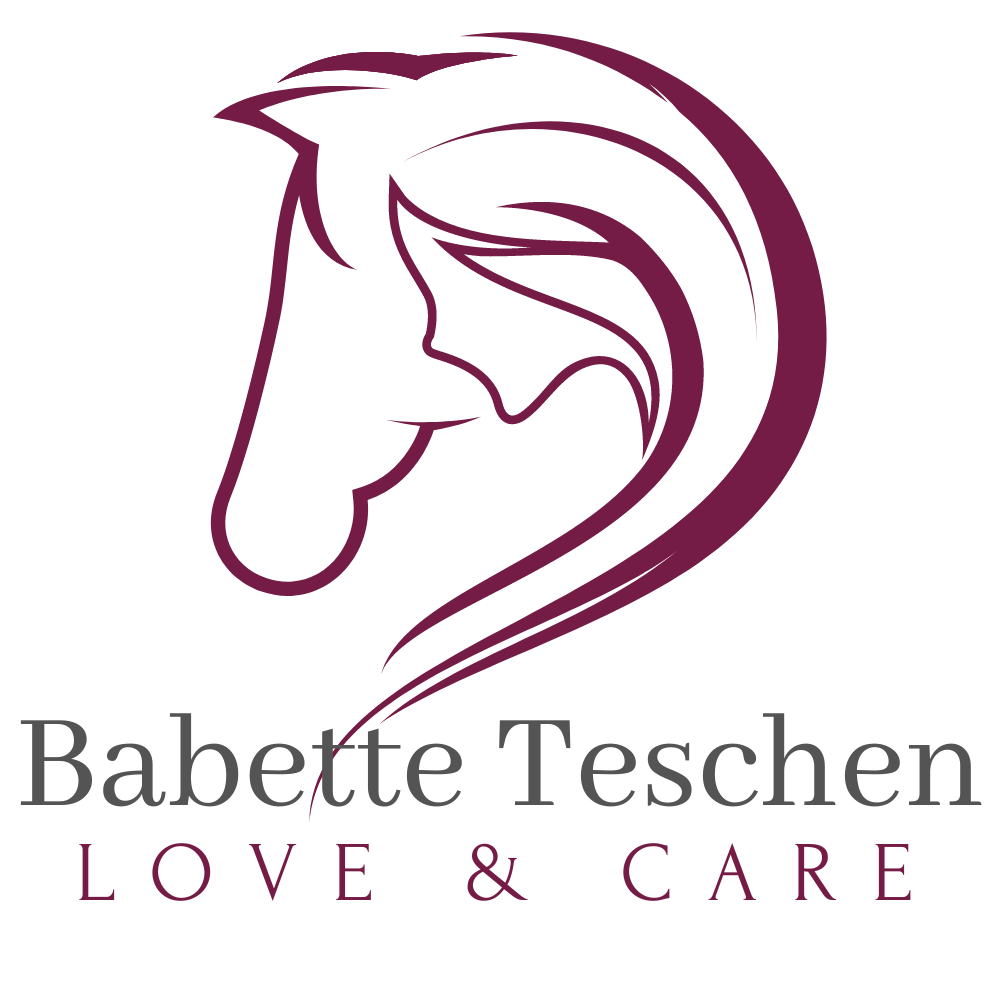
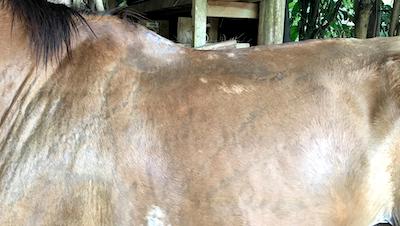
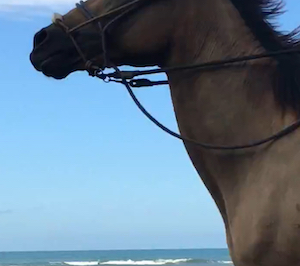
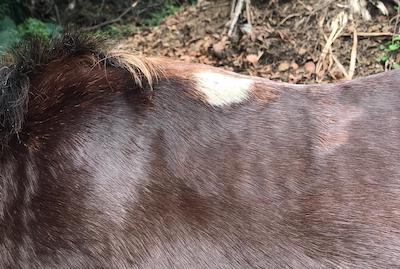
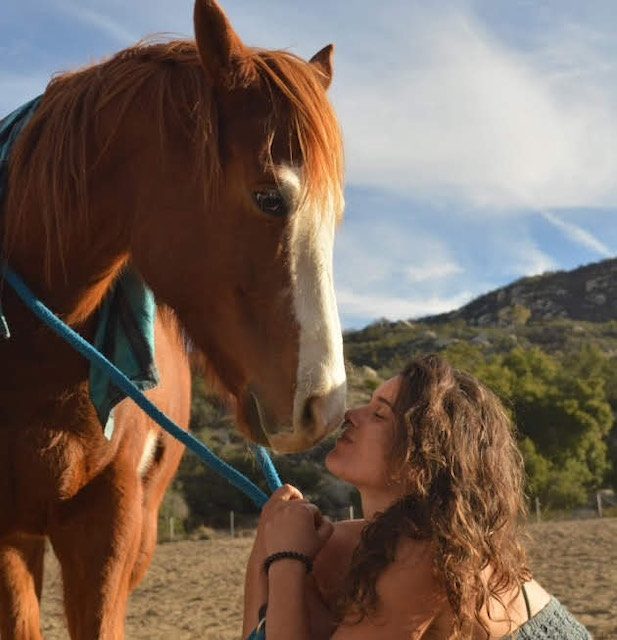
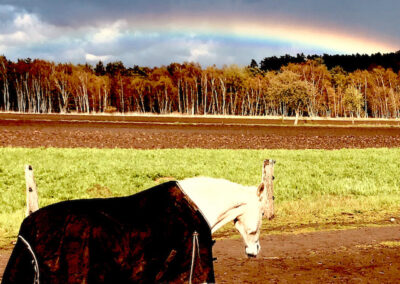
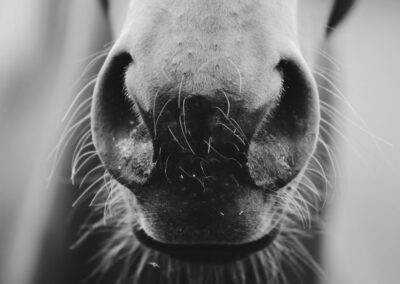
0 Comments